
Deep cleaning your house can feel like an overwhelming task, especially if it has been neglected for some time. In this post, we'll provide you with tips and tricks on how to deep clean your house like a pro, leaving it sparkling clean and looking and smelling fresh!
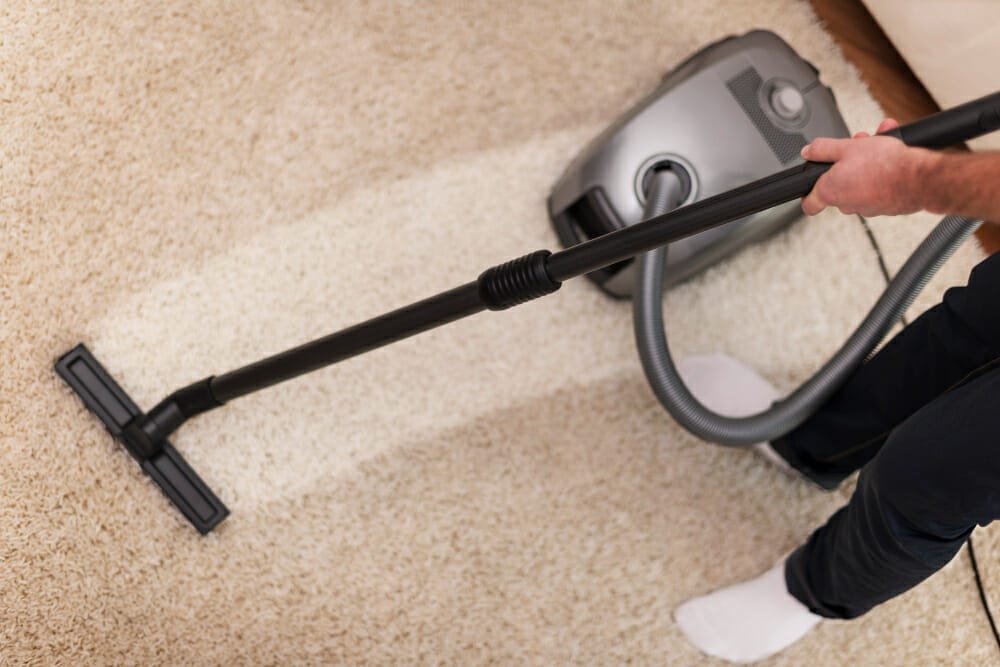
Carpets can trap dust, dirt, and allergens, making them the perfect breeding grounds for bacteria and germs. To deep clean your carpets, begin by vacuuming them thoroughly to remove any loose dirt and dust. Then, use a steam cleaner to clean deep into the fibers and remove any stubborn stains. You can also sprinkle baking soda on the carpets before vacuuming to neutralize bad odors.
Pro tip: Don't forget to move furniture and clean under and behind it!
The kitchen is one of the busiest areas in a house, so it's important to deep clean it regularly. Start by emptying out your fridge and freezer and wipe down all shelves and drawers with warm soapy water. You can also use a solution of equal parts water and vinegar to disinfect the surfaces. Next, clean your oven and stove with a degreaser, paying special attention to burners and knobs. Finish off by mopping the floors.
Pro tip: Don't forget to clean inside the microwave and toaster oven!
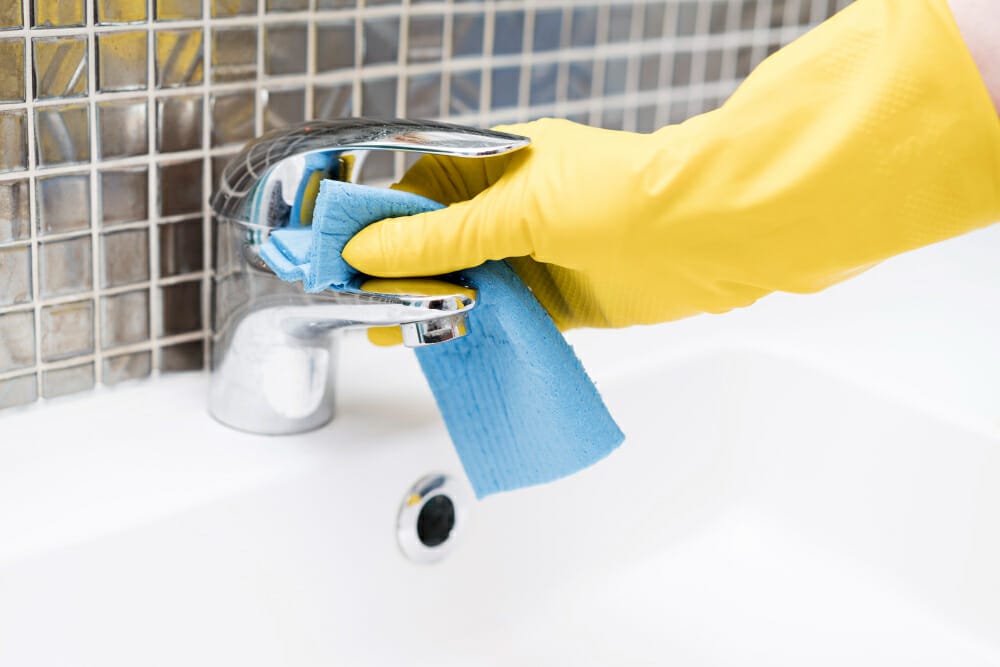
Bathrooms are another area that requires regular deep cleaning to keep them hygienic. Start by scrubbing the shower and bathtub with a mixture of baking soda and water, then rinse thoroughly. Next, clean the toilet bowl with a toilet brush and disinfectant cleaner. Don't forget to wipe down all surfaces, including countertops, mirrors, and cabinets.
Pro tip: To deep clean your house bathroom, make sure to remove water stains from faucets and showerheads, soaking them in equal parts water and vinegar for an hour before scrubbing with a toothbrush.
Windows are often overlooked during cleaning, but they can make a big difference in how clean your home looks and feels. Begin by dusting blinds and washing curtains according to their care instructions. Next, wipe down windowsills and frames with a damp cloth. For streak-free glass, use a glass cleaner and a microfiber cloth to wipe down the windows, working from top to bottom. Don't forget to clean both the inside and outside of your windows for a truly sparkling finish.
Pro tip: For hard-to-reach or higher windows, use an extendable duster!
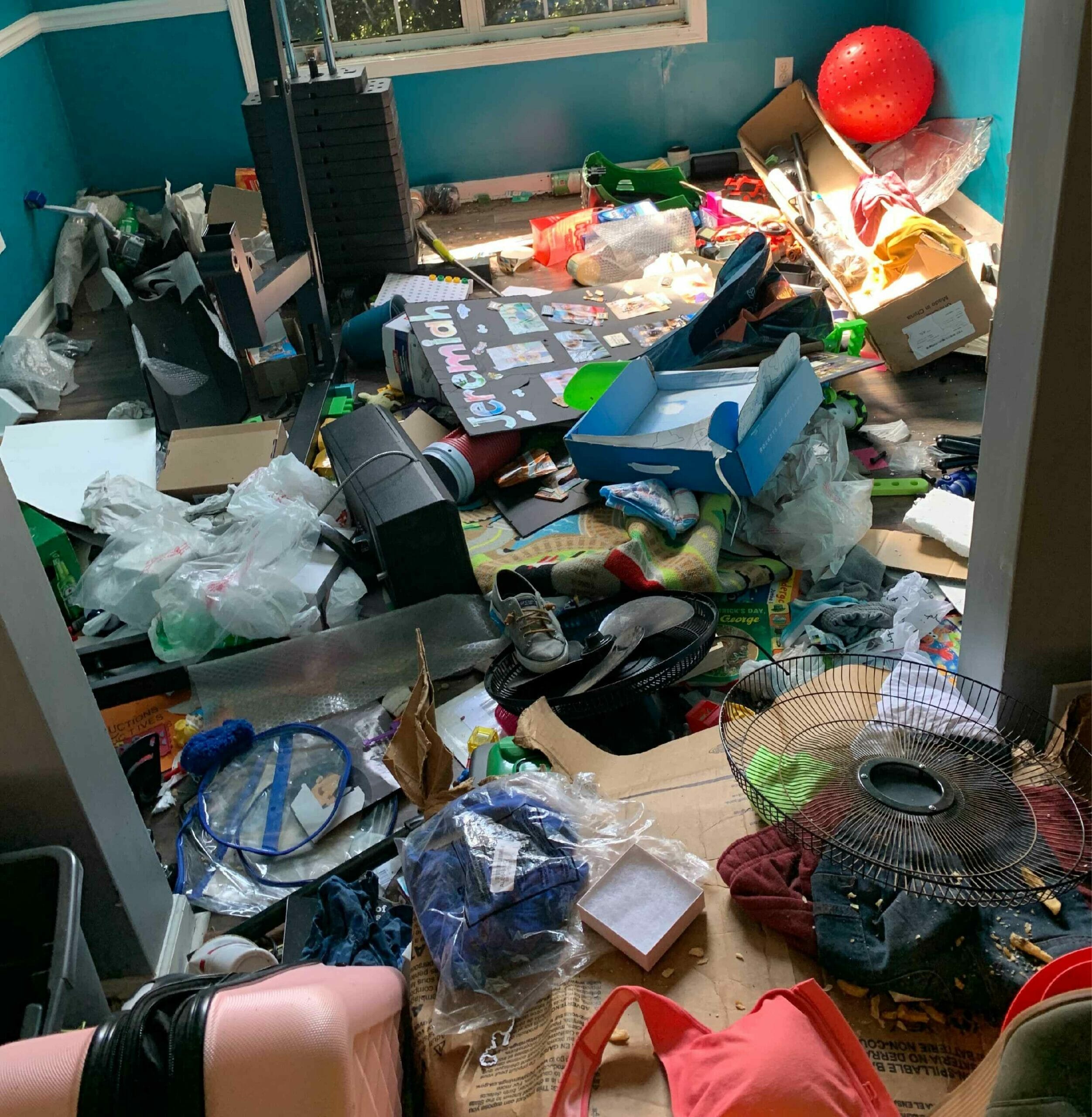
We spend a lot of time in our bedrooms, so it's important to include it if you really want to deep clean your house. Begin by washing all bedding, including sheets, comforters, and pillowcases. While those are in the wash, dust all surfaces, including nightstands and dressers. Vacuum the floors and carpets, paying special attention to corners and under furniture.
Pro tip: To freshen up your mattresses, sprinkle some baking soda on them before vacuuming.
Upholstered furniture can accumulate dirt and grime over time, making it look dull and neglected. To deep clean your house upholstery, start by removing any loose dirt and dust using a vacuum with an upholstery attachment. Next, use a fabric cleaner, or create your own using equal parts vinegar and warm water, and gently scrub the upholstery with a soft-bristled brush. Wipe off the cleaning solution using a clean, damp cloth, and allow the furniture to dry completely.
Don't forget to flip cushions and pillows for an even clean. For wooden furniture, use a wood cleaner or a solution of equal parts olive oil and vinegar to remove any build-up or stains. Wipe with a clean cloth and buff to bring back the shine.
Pro tip: To keep your upholstery looking fresh in between deep cleans, regularly vacuum and spot-clean any spills or stains as soon as they happen.
Small details can make a big impact. Take some time to clean often overlooked areas such as baseboards, light switches, and doorknobs. These areas can accumulate dust and grime over time, making them look dingy and neglected.
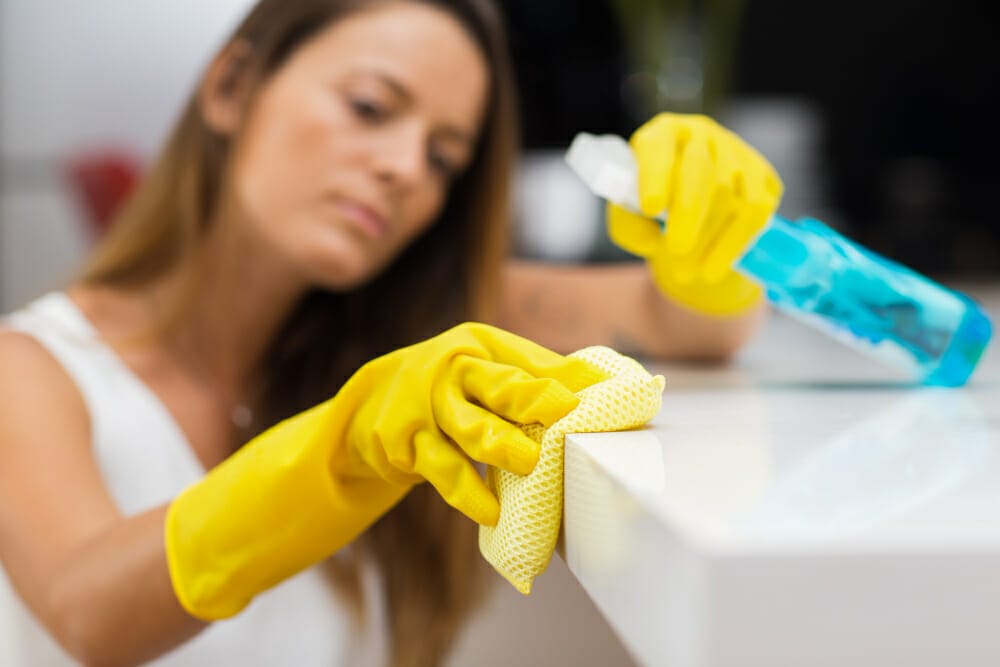
For baseboards, use a damp cloth or a magic eraser to wipe away any marks or scuffs. Light switches and doorknobs can be wiped clean with a disinfectant solution to remove any germs or bacteria. For light fixtures, dust with a microfiber cloth or use a gentle cleaner specifically designed for lighting fixtures.
Pro tip: To save time and energy, incorporate these small details into your regular cleaning routine so they don't become overwhelming tasks.
Clutter can make any space look and feel dirty, even if it's not. Make a habit of regularly decluttering your home to keep it feeling clean and organized. Here are some tips:
To maintain a clean and tidy home or workplace, create a cleaning schedule that works for your needs. This could involve daily cleaning tasks such as wiping down surfaces and doing the dishes, weekly tasks such as deep cleaning your bathrooms and mopping the floors, and monthly tasks such as decluttering and cleaning out your fridge.
By following these simple tips and tricks, you can deep clean your home like a pro, leaving it looking and smelling fresh and clean. But, if you find yourself overwhelmed by the task or simply don't have the time to do a thorough deep cleaning yourself, consider reaching out to Bio-One for assistance.

Our professional cleaners are trained and equipped to handle all types of deep cleaning, from hoarding situations to crime scene cleanups. Contact us today for a free consultation!

Grief and loss are universal experiences that we all go through at some point in our lives. Losing someone you love can be one of the most devastating experiences you can go through, and it can be hard to know how to support someone who is grieving. While there is no magic cure to fix the pain, you can help your loved one navigate their anguish and support them on their healing journey. This blog post will provide practical tips on how to help a loved one with grief and loss.
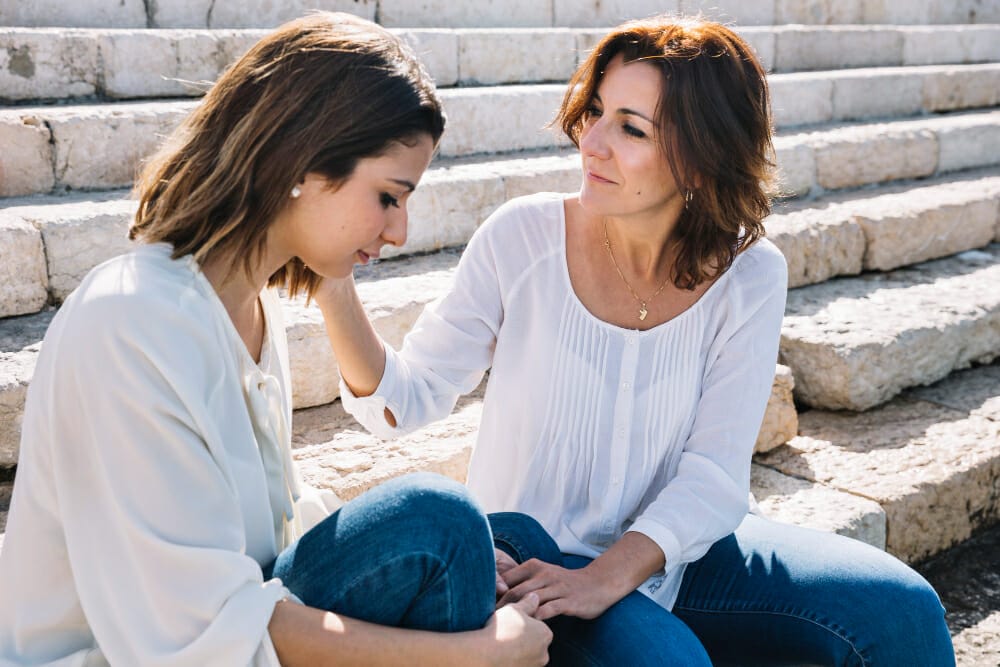
One of the most important things you can do for someone who is grieving is to be there for them. Let them know that you are there for them and that they don't have to go through this alone. Listen to them as they talk about their emotions and experiences, and let them know that you are there to support them in whatever way they need.
Grieving is mentally, emotionally, and physically exhausting, and your loved one may need some help with everyday tasks. Offer to take care of household chores or run errands for them. This can be an enormous help in reducing their stress and allowing them to focus on their grief. A few examples may include:
There are many resources available to support those who are grieving. You can share books, articles, and websites that discuss coping mechanisms and how to deal with grief. Some organizations also offer support groups and counseling services. Below are some options you can share with your loved one:
Check out our Resources Section to learn more.
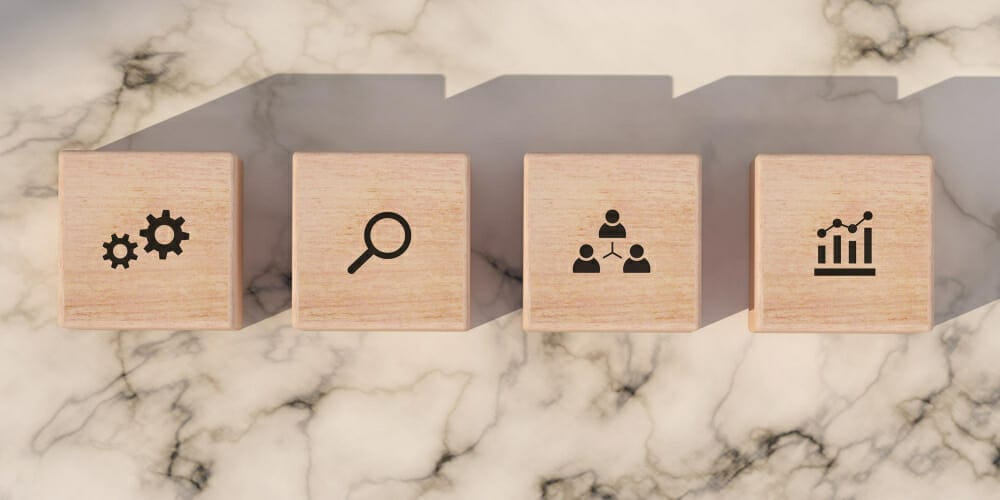
Encourage your loved one to celebrate their loved one's life and legacy. You can create a memory box, scrapbook, or photo album together. Share stories and memories and use them as inspiration to create something beautiful that they can always treasure.
The grieving process is not linear, and everyone experiences it differently. Your loved one may have good days and bad days, and it's important to be patient and understanding. Don't push them to "move on" or rush through their grief. Be there for them and let them know that you are there no matter what.
Grief and loss can be incredibly challenging to navigate, but you don't have to go through it alone. Reach out to friends, family, or professionals for help. Remember that everyone's journey is different, and it's important to be patient and understanding. Continue to support your loved one as they heal and remember that it's okay to talk about their loved one and preserve their memory.
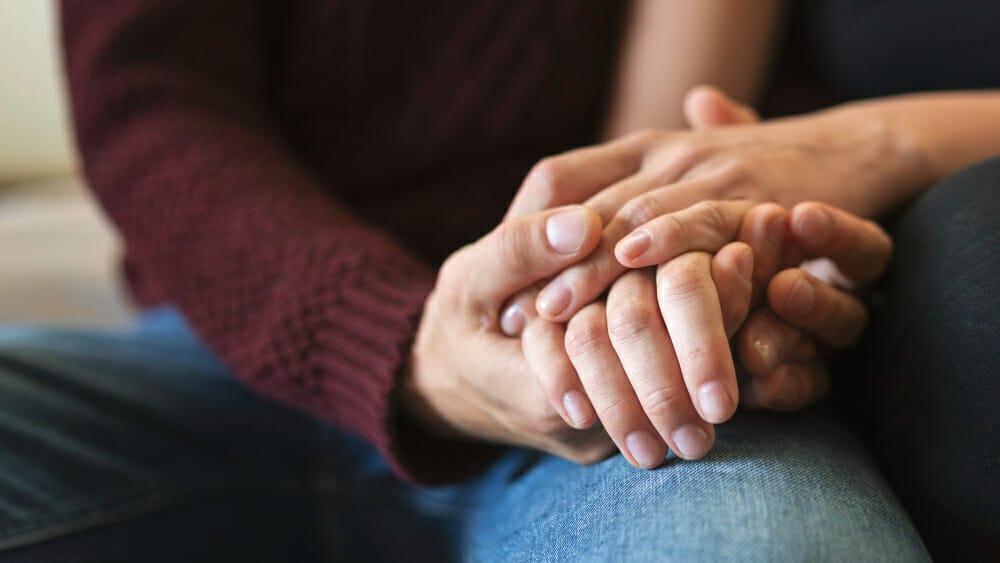
However, if you or your loved one feel overwhelmed by feelings of sorrow, it's important to seek professional help. Grief counseling can provide a safe and validating space for you or your loved one to process their emotions and learn coping mechanisms. Remember, healing takes time.

Animal hoarding is a complex issue that affects not just the animals in question but also the people in their lives. Most people are devoted to their pets and consider them to be important members of the family. However, when love crosses the line, it can lead to animal hoarding. This is a situation where individuals keep more animals than they can care for, and the animals often end up living in unsafe and unhealthy conditions. In this blog post, we will explore the common signs of animal hoarding and offer some insight into what you can do if you observe this situation in your neighborhood.
The first common sign of animal hoarding is unusual odors. If you smell strong, unpleasant smells coming from a household and notice numerous animals inside, it may be an indication of an animal hoarding case. The odors can be a result of urine, feces, and other waste products, that are not adequately disposed of. These smells can also be dangerous to human health, and swift action should be taken.

Another sign to look out for is the physical condition of the animals. Most animals in hoarding situations are not well taken care of and tend to be malnourished, sick, or injured. They may also have overgrown nails, matted fur, and parasites. These conditions can cause the animals to suffer and lead to their untimely death.
Piles of litter or debris, including fecal matter, strewn or stacked high in areas of the home, can also be a sign of animal hoarding. This clutter and/or daily waste create an environment that is not healthy for both the animals and humans living in the household. The fecal matter, for example, can attract pests, which can cause further harm to the animals and the living conditions to deteriorate further.
In severe cases of animal hoarding, you may come across dead animals on the property. Due to the large number of animals living in a confined space and inadequate care, some may not survive. These deceased animals must be removed promptly to prevent further harm to human health and safety.
Dead carcasses create a significant risk to the overall well-being of those living in the household. It's not hygienic and can breed dangerous and deadly diseases.

Animal hoarders are often secretive and tend to avoid letting anyone inside their homes. They may make excuses for not allowing visitors, claiming they are 'too busy' or 'unwell'. This behavior is a red flag that something is not right in the home, and authorities should be notified immediately.
Animal hoarding requires a multi-faceted approach to address it effectively. The first step is to recognize that animal hoarders often need psychological help, as their behavior stems from underlying mental health issues.
Interventions should include counseling and therapy sessions to address the root cause of the hoarding behavior. Additionally, community support services, such as financial aid, food assistance, and housing assistance, can help alleviate the hoarder's stress and reduce the need for hoarding animals.
Furthermore, animal welfare organizations and local authorities should work together to remove the animals from the hoarder's care. This process should be done sensitively, considering the individual's mental state and providing necessary support throughout.
When you observe the common signs of animal hoarding, you mustn't ignore them. Hoarding situations cause harm both to animals and humans, and they require immediate attention. If you suspect any hoarding situation in your neighborhood, contact Bio-One Pittsburgh. Bio-One can remediate animal hoarding and help individuals connect to professionals to treat hoarding.
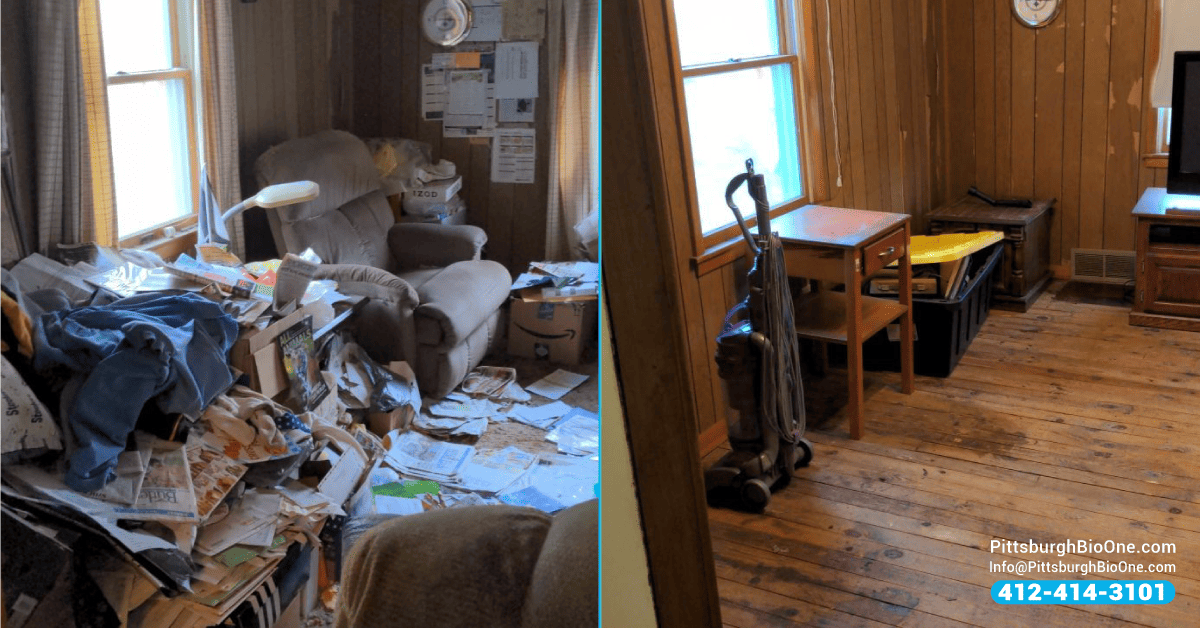
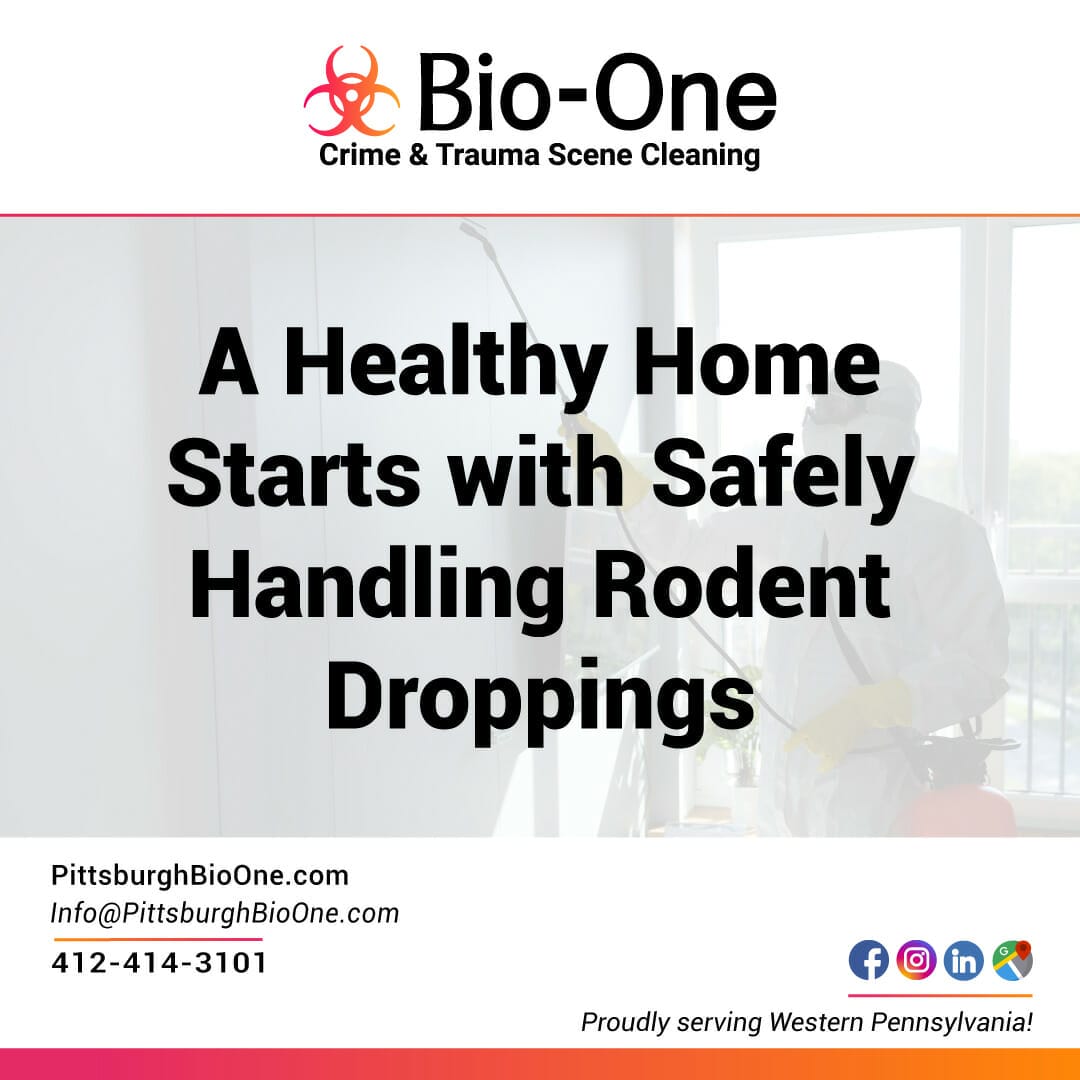
Rodent infestations in our homes and businesses can be a health hazard that we cannot ignore. Rats, mice, and squirrels have been known to be carriers of diseases that can be transmitted through their feces, urine, and waste. Exposure to these harmful agents can result in serious illnesses. Hence, proper handling of rodent droppings and urine is the first step in ensuring a healthy living environment. In this blog post, we will discuss how to clean up rodent droppings in your home, common areas where rodents nest, and how to prevent them from entering our premises.
Rodents usually nest in dark, damp, and warm areas of our homes. Common nest sites include attics, crawl spaces, wall voids, and basements. They also prefer to make their nests out of materials such as insulation, cardboard, and fabric. These materials provide insulation and suitable nesting material.

Once rodents infest an area, they leave behind droppings, urine, and waste. These can be found in corners, along baseboards, and under sinks.
Exposure to rodent feces and urine can lead to many health problems. Hantavirus, leptospirosis, salmonella, and other dangerous diseases can be transmitted by rodents. If you're dealing with a potential rodent infestation in your home or business, and start feeling fever, vomiting, abdominal pain, or fatigue, you might be contaminated and should seek medical help right away.
Before you begin the cleaning process, you need to ensure you have the proper equipment. Use protective gear that includes gloves, masks, and goggles. Below are some recommendations from our experts when cleaning up rodent waste:
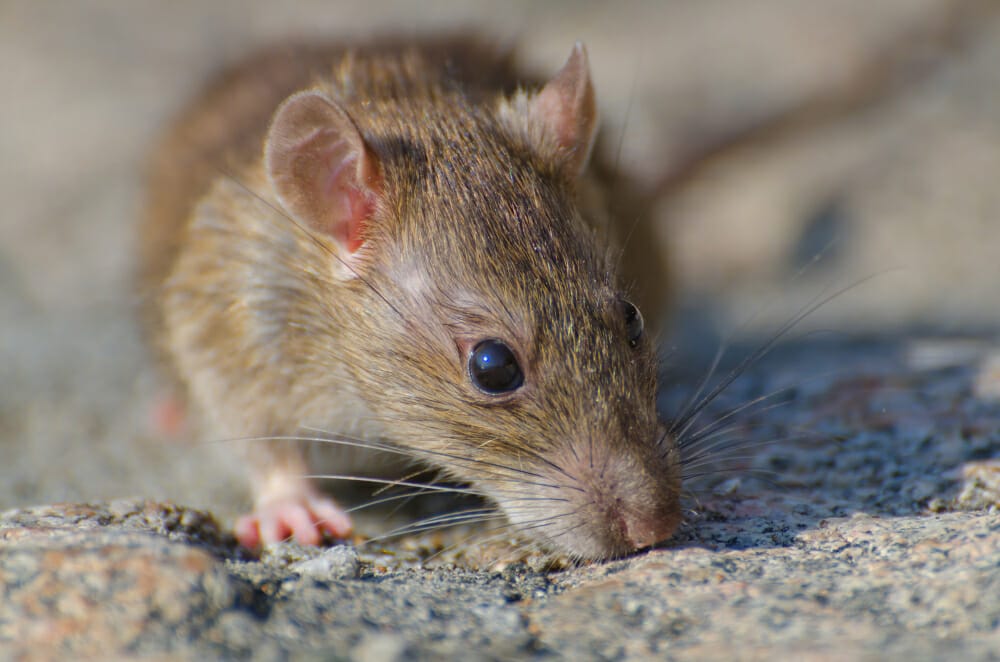
To avoid potential health complications and damage to your property, it's important to take preventative measures against rodent infestations. Here are some tips:
Regular pest control services can help prevent infestations before they start.
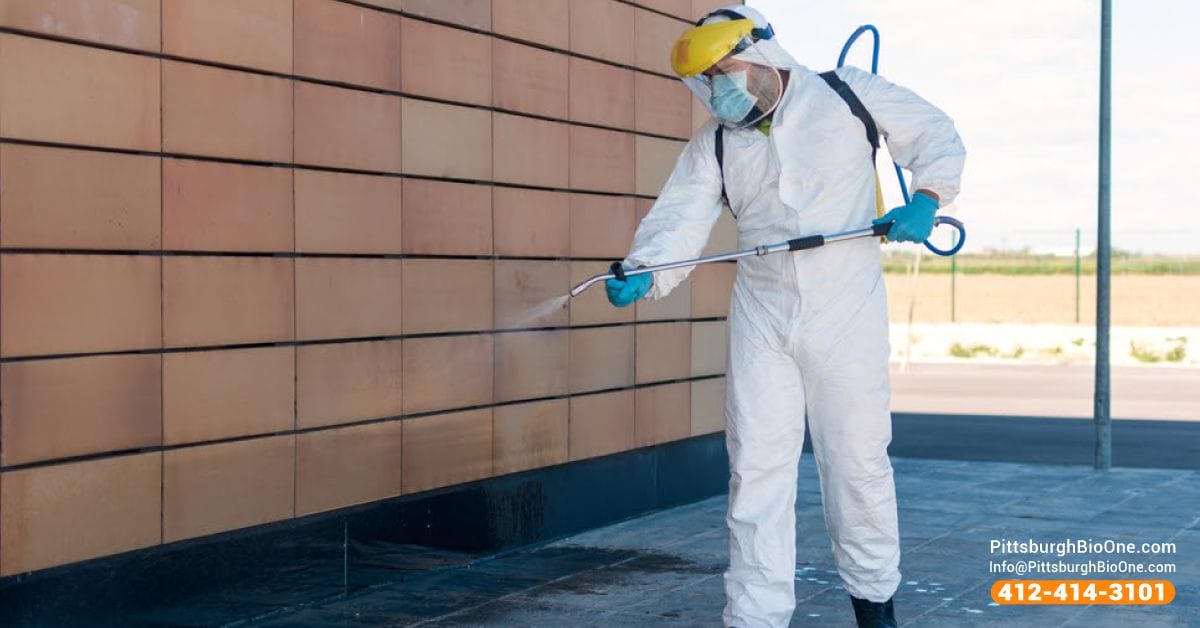
In case you find it stressful or just don't know how to clean up rodent droppings, Bio-One can assist in restoring areas of rodent feces and urine. Our professional team uses specialized tools and techniques to safely remove rodent waste, and sanitize the area to prevent future infestations. Call today and get a free consultation to help you restore your home or business to a clean and healthy environment.

Hoarding affects millions of people worldwide, and all the hoarded properties are a clear indicator of this disorder. While collecting items is normal human behavior, hoarding goes beyond that and becomes excessive, causing discomfort and harm to the individual and their loved ones. In this blog post, we will discuss the common signs of Hoarding Disorder and telltale signs of hoarded properties.
We'll also discuss the dangers of clutter and hazards that can be found in these environments, and why it's essential to help those struggling with hoarding find professional help.
Disclaimer: The information provided in this post is intended to educate and raise awareness about Hoarding Disorder and is not a substitute for professional mental health advice. We are not mental health professionals, and our insights should not be used to diagnose or treat hoarding behavior. Our role is to assist in restoring homes affected by hoarding to a safe, functional state, and we strongly advocate for the involvement of mental health professionals in this process.
Bio-One of Pittsburgh
According to the American Psychiatric Association (APA), Hoarding Disorder is defined as "the persistent difficulty discarding or parting with possessions, regardless of their actual value." Individuals with HD have an excessive emotional attachment to objects, leading them to keep items that may seem worthless to others. This behavior often causes distress and interferes with daily life activities.
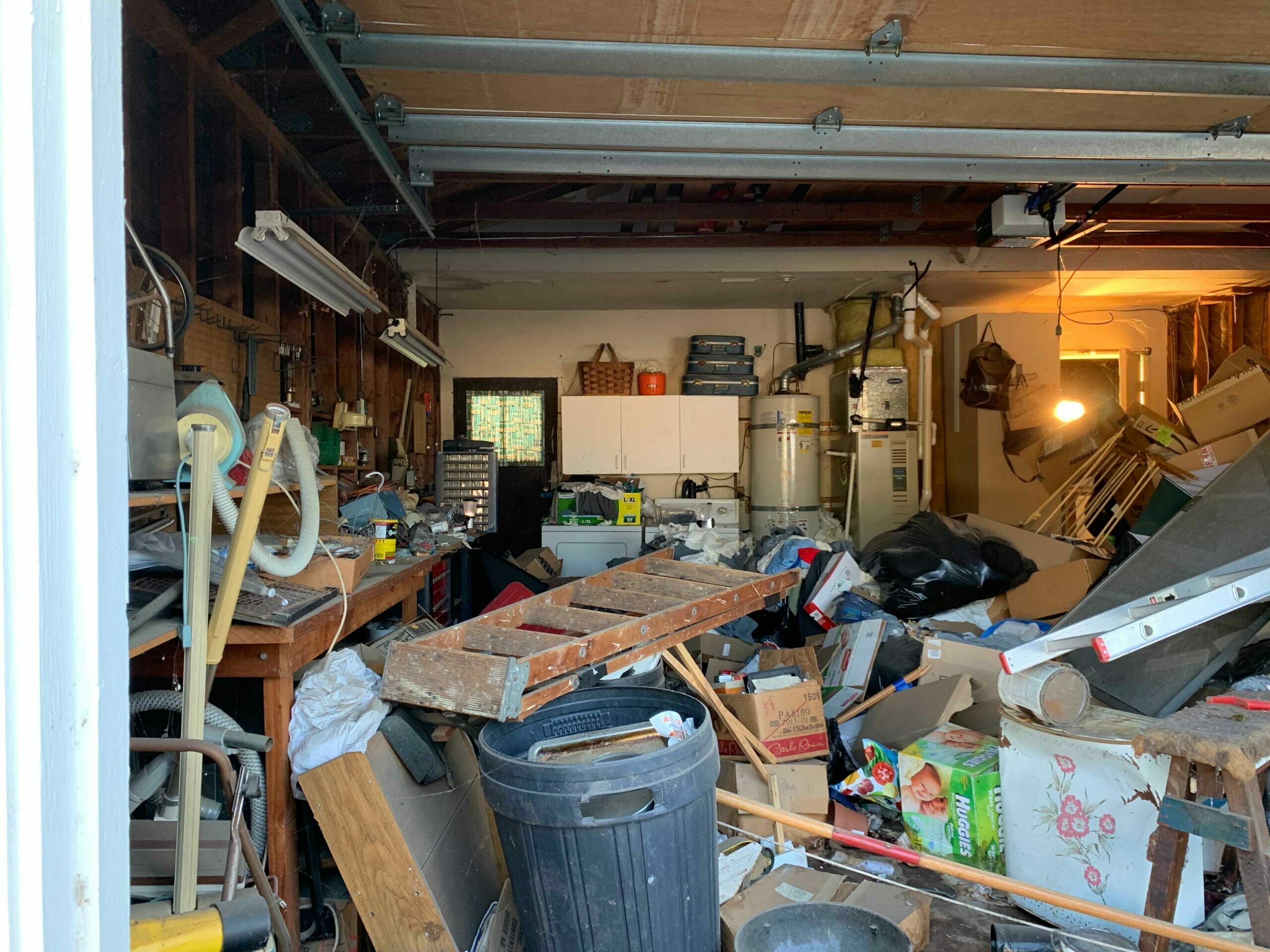
HD can manifest in various ways, making it challenging to identify. Here are some common signs that may indicate HD:
One of the most apparent signs of Hoarding Disorder is a cluttered living space that makes it difficult to move around or use certain rooms in the house.
Individuals with HD have a hard time getting rid of possessions, even if they have no practical use or value.
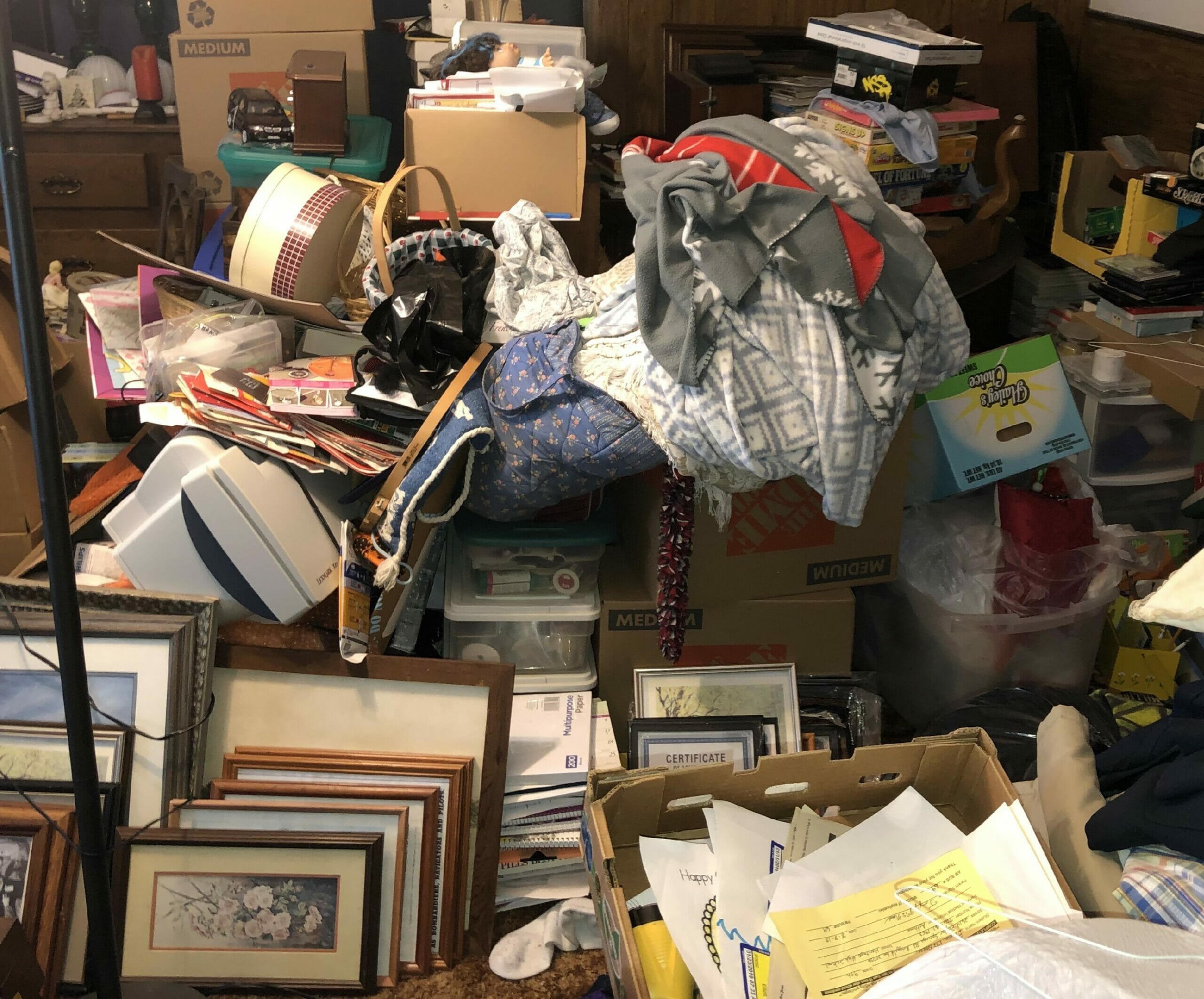
Hoarders tend to buy or collect things excessively, often resulting in overflowing storage spaces and hoarded properties.
Hoarders often attach sentimental value to objects, making it challenging for them to let go of them.
Hoarders struggle with organizing their possessions, resulting in chaotic and cluttered living spaces.
Apart from creating an overwhelming living environment, Hoarding Disorder can also pose significant hazards to the person struggling with it and those around them. Some potential dangers include:
Additionally, hoarded materials can often become breeding grounds for bugs, rodents, and other pests, which pose a threat to public health.
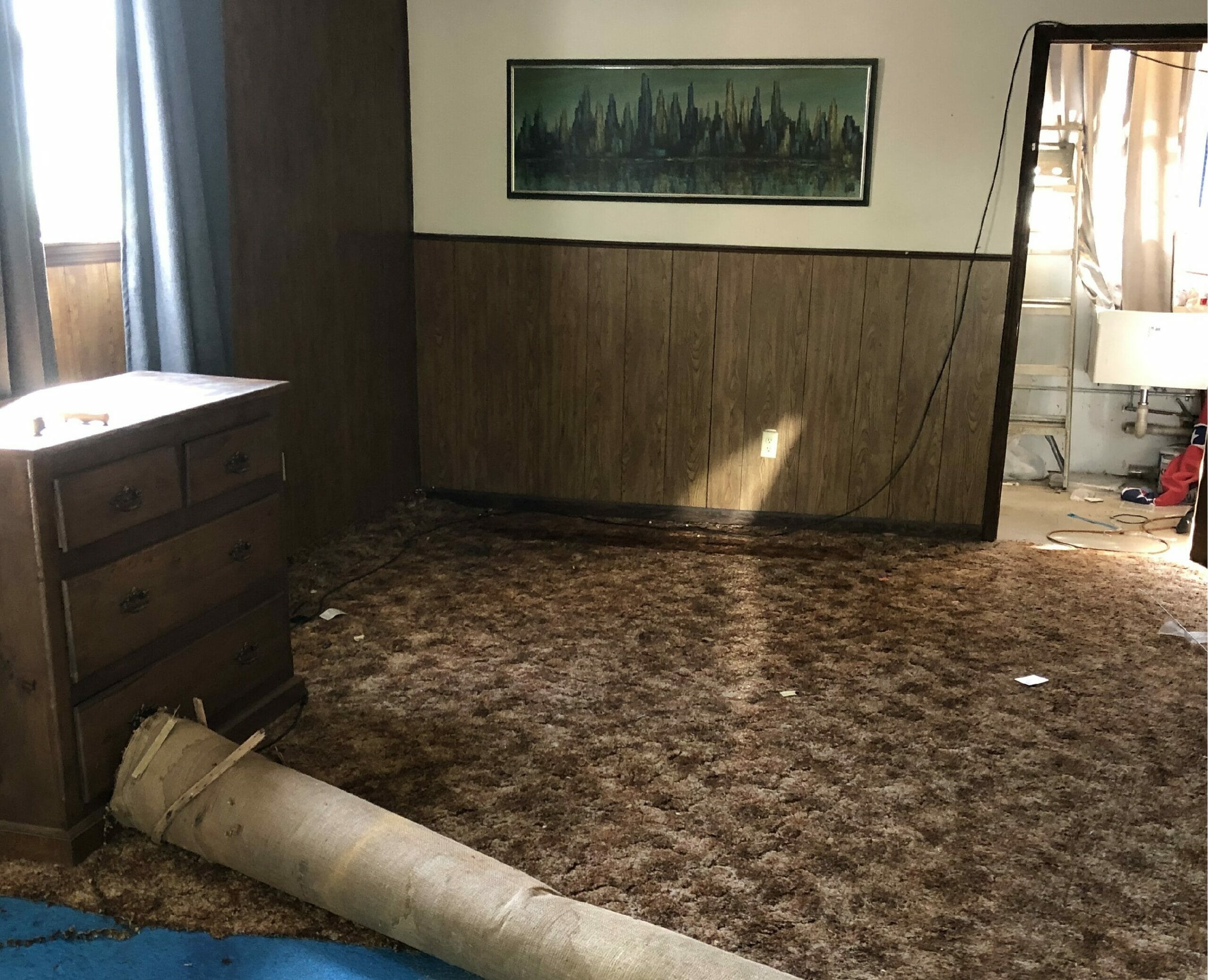
Hoarded properties often have common characteristics that can be identified by property managers, landlords, and neighbors. Some of these signs include excessive clutter, animal or insect infestations, odors, and unsanitary living conditions. Hoarded properties can pose significant risks to individuals, families, and communities. For example, hoarded properties are often prone to fires and can contribute to the spread of diseases.
The role of mental health professionals in hoarding situations cannot be overstated. Treatment and interventions are essential for individuals struggling with hoarding behaviors. Some ways to help someone with hoarding include:
Identifying common signs of Hoarding Disorder and hoarded properties is crucial in helping those struggling with the condition.
In some cases, hoarding behaviors can be too overwhelming for individuals or their loved ones to handle alone. That's where Bio-One of Pittsburgh comes in.

We understand the sensitivity and complexity of hoarding and work with compassion and empathy towards our customers. If you or someone you know is struggling with hoarding, do not hesitate to reach out to us.
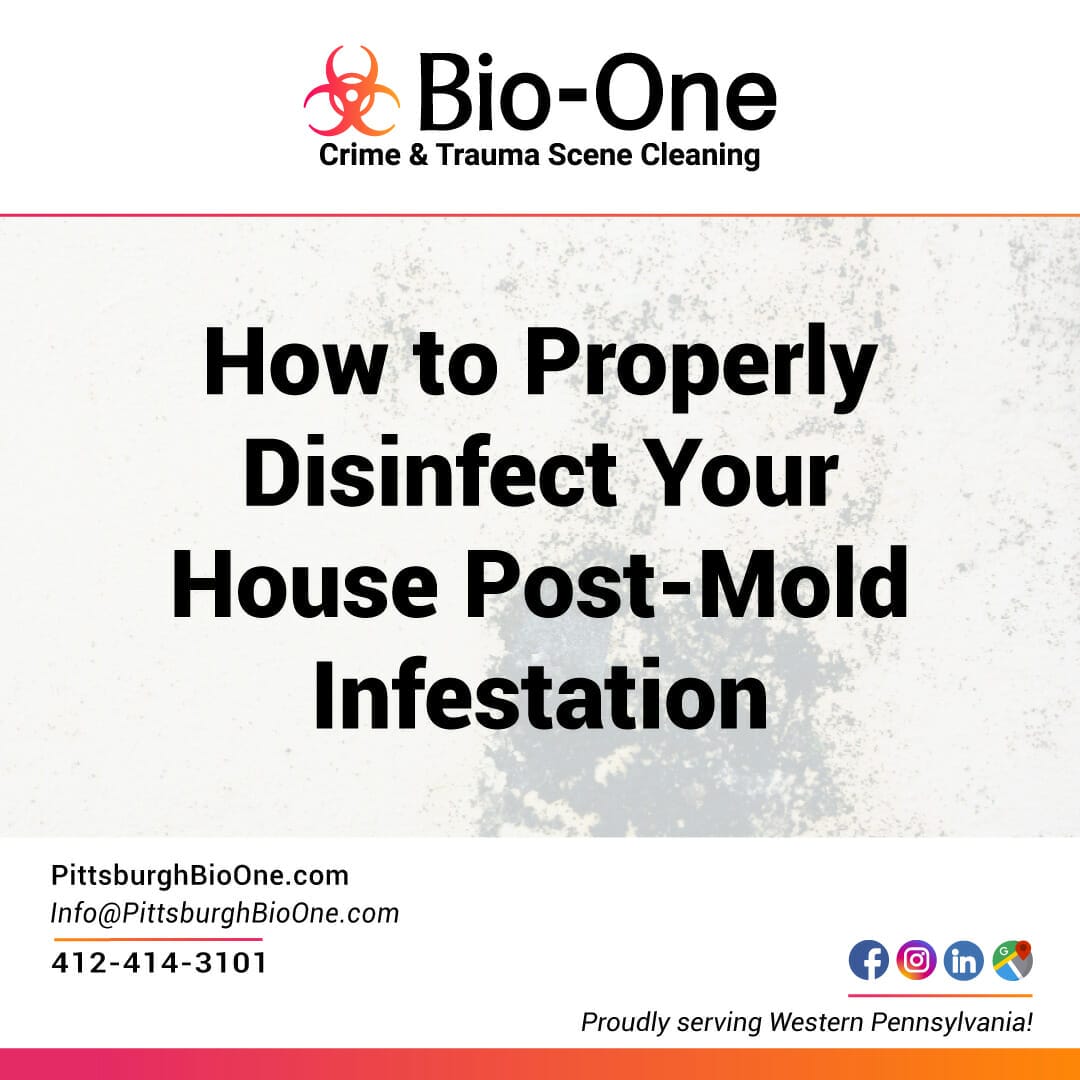
If you've recently had a mold infestation in your home due to water damage, you're probably wondering how to properly clean and disinfect your house. Disinfecting a house after mold ensures a healthy for you and your family.
There are many misconceptions when it comes to cleaning up after mold, like whether or not we can use bleach. It's important to use certified cleaning products and follow proper procedures to make sure you don't expose yourself to health risks or cause further damage to your property. Here are some helpful tips for properly disinfecting your home post-mold infestation.
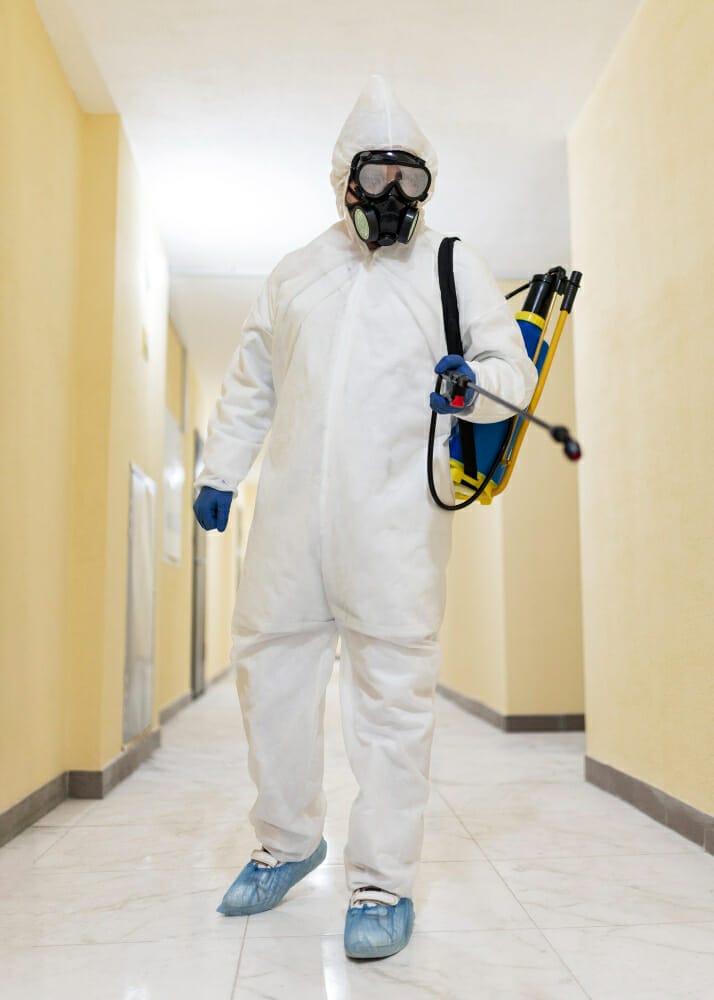
Before you start the disinfection process, make sure to gear up and wear protective equipment. This includes gloves, respirators or masks, and goggles. Mold spores can be harmful if inhaled or come into contact with your skin or eyes, so it's important to protect yourself
Don't rely on just any cleaning product to disinfect your home post-mold. Choose certified mold cleaning products that are specifically designed to remove mold from surfaces. These products have been tested and proven effective in killing mold and preventing its return.
Although bleach is a powerful disinfectant, it's not the best solution when dealing with large areas of mold damage. Bleach can damage many surfaces and may only provide temporary relief. It's not effective in penetrating porous surfaces or materials like wood and drywall. Instead, use certified mold cleaning products or contact a professional mold remediation company.
Mold thrives in damp and humid environments, so it's important to dry the affected area completely to prevent mold from regrowing. Use fans and dehumidifiers to help speed up the process and decrease humidity levels in your home.
Some items, like carpets, furniture, and clothes, maybe too heavily contaminated with mold to be salvaged. These items should be discarded properly to prevent further spread of mold spores. Make sure to double-bag them and dispose of them carefully.
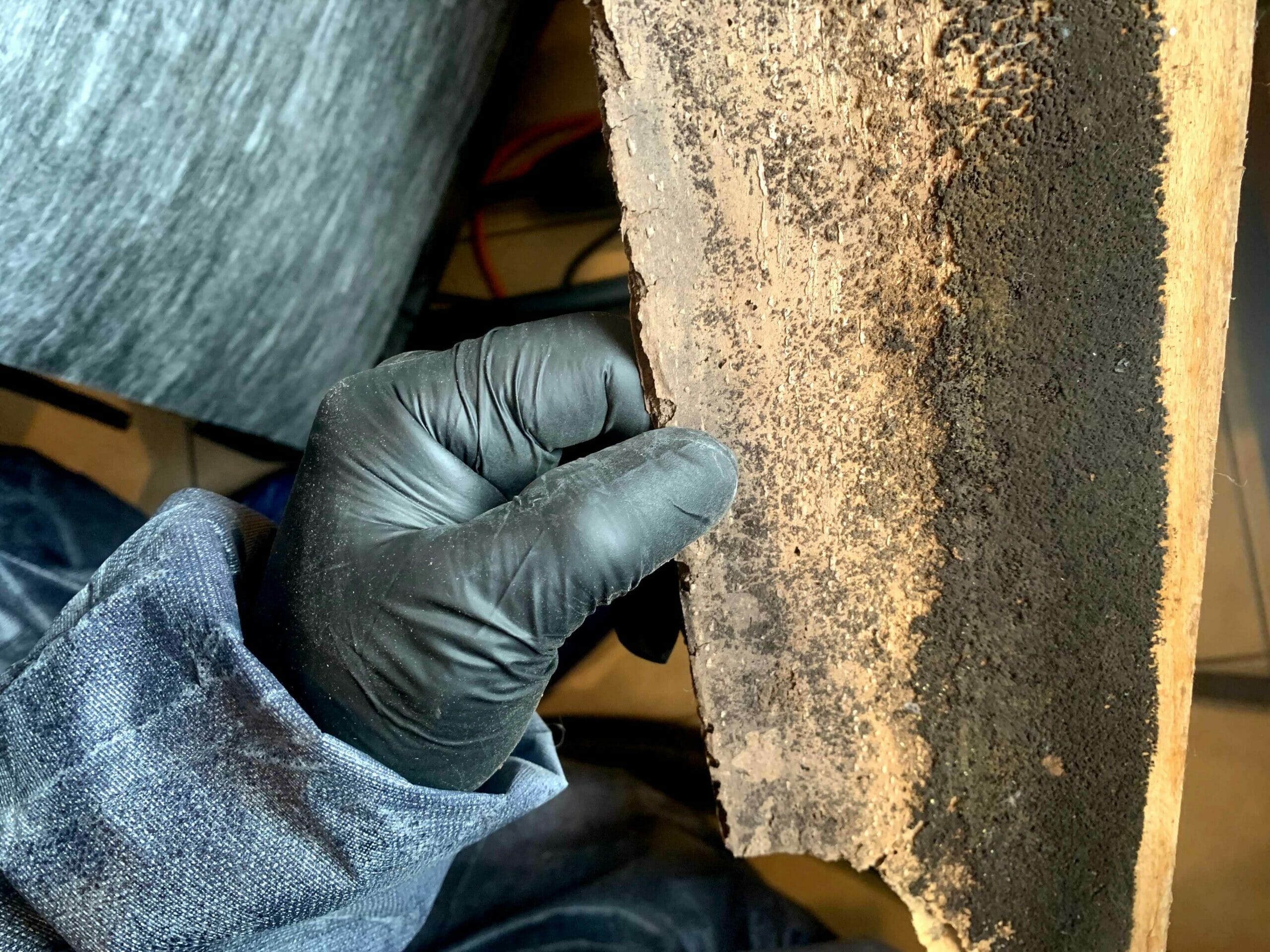
Here are some tips to clean and disinfect a house after mold or water damage, especially for porous and non-porous surfaces:
If you're unsure about how to properly clean up and disinfect a house after mold, consider hiring a professional mold remediation company. They can assess the extent of the damage and provide a plan to safely and effectively clean up all the affected areas. With professional equipment, they can get the job done right and prevent future mold growth.
Disinfecting your home post-mold infestation can take work. It's important to use certified cleaning products, wear protective gear, and follow proper cleaning procedures to ensure that the job is done safely and effectively. Remember to dry the affected area and consider hiring a professional mold remediation company if you're unsure about how to clean up the mold in your home.
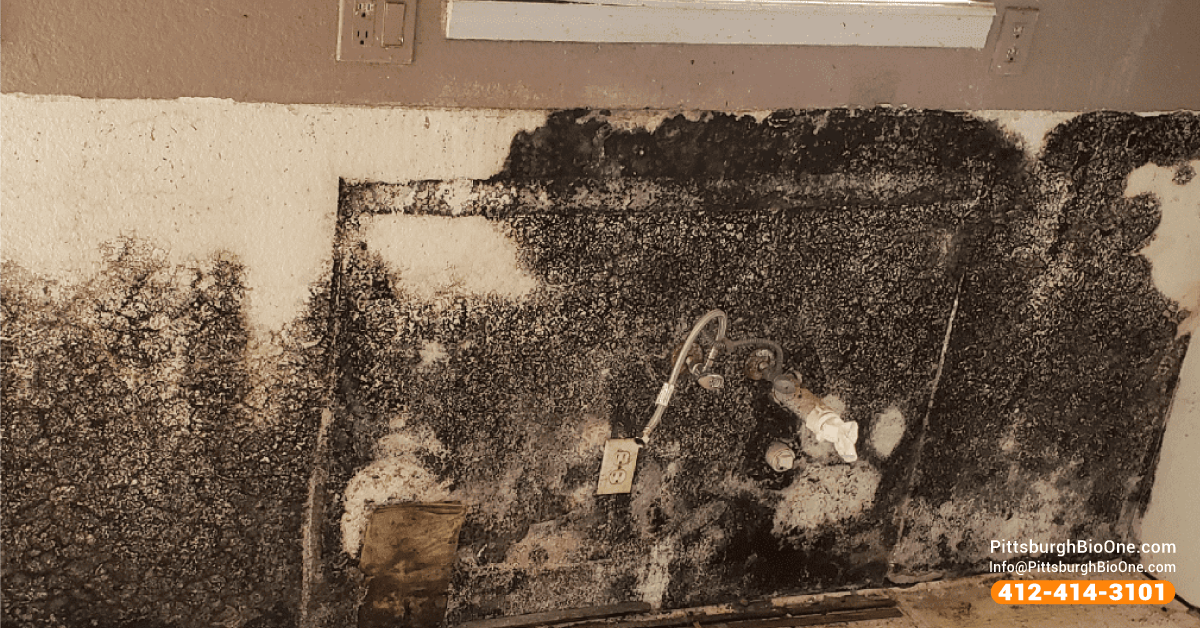
At Bio-One of Pittsburgh, we are certified mold remediation contractors who can take care of any restoration process so you can have peace of mind knowing your home or business is safe!
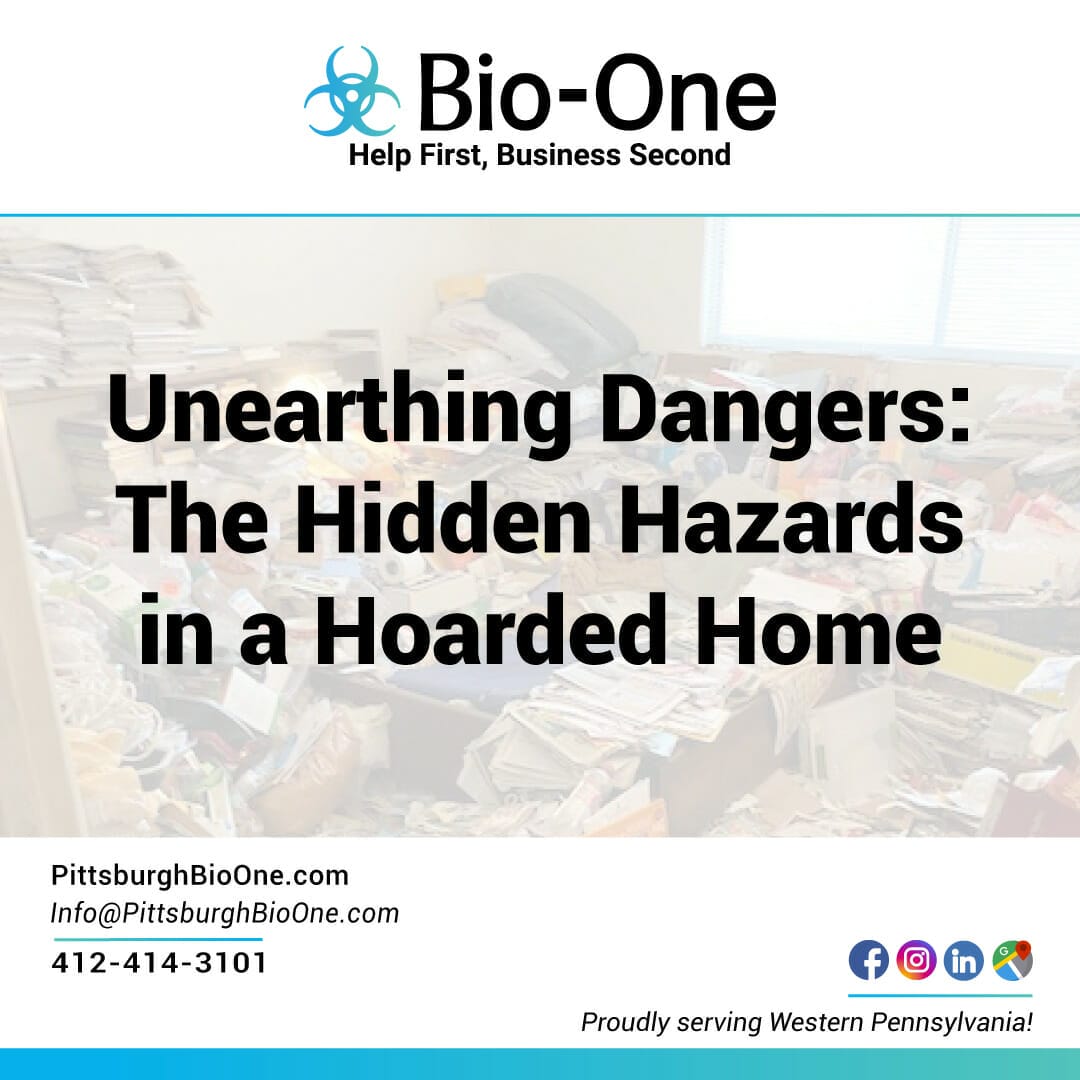
The issue with hoarding extends far beyond the individuals themselves and poses a danger to anyone who may come in contact with the hoarded items. Hoarding can create a hazardous living environment, filled with dangerous pest infestations, fire threats, mold growth, and other risks. In this blog post, we will investigate the hazards in a hoarded home, and explore the smart solutions available to address the risks.
Remember Bio-One of Pittsburgh is here to help you unearth the dangers and make the home a safe and healthy living environment once again.
Due to the vast accumulation of items hoarded in an unhealthy environment, it is no surprise that pests could become an issue. Hoarded areas can provide a breeding ground for pests such as cockroaches, rodents, bed bugs, and more, increasing your risk of infestation.
Pest infestations can result in diseases, triggers for allergies, and harmful bacteria spreading, and can pose a serious threat to your health. Furthermore, it’s hard to get rid of these pests if the house is filled with hoarded items making it a difficult task.

Hoarding often poses a heightened fire hazard. As hoarded items accumulate, so too does the risk of hazardous materials, including flammable liquids and hazardous wiring. Fire can spread quickly through a hoarded home, generating intense heat and smoke, which can lead to respiratory
When hiring a hoarding cleanup company, part of the restoration process includes eliminating unnecessary items that pose a fire risk and providing and channeling necessary restorations to other sources of fire hazard.

Mold is a common issue in hoarded homes, and can be extremely hazardous. It can cause respiratory issues, allergies, and even neurological problems. Hoarding often reduces airflow in the home, which complicates breathing and makes for the ideal environment for mold spore growth.
It is difficult to tackle the mold growth issue without a hoarding cleanup service provider. They can help in clearing out the items to improve airflow and tackle mold to get rid of the problem.
Besides the above-listed dangers, hoarded homes can also pose other hidden risks. Such as dangerous, hazardous material mixtures that can pose health threats and unsafe living conditions. Uneven floors and stairs, the possibility of ceiling leaks, and the possibility of chemical contamination can make it hard to determine where the dangers lie without the help of professionals.
With a team of certified experts, Bio-One of Pittsburgh stands ready to assist in managing the challenges of hoarding. Our professionals can handle the cleanup, decontamination, and restoration of homes, prioritizing the safety of everyone in the affected property.
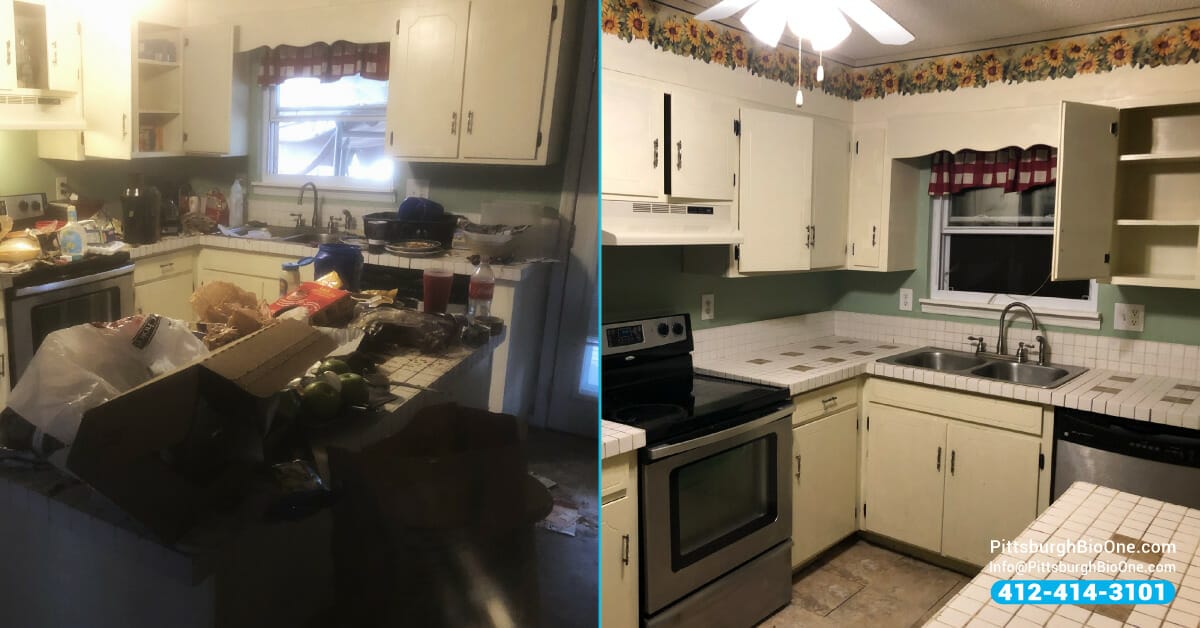
We adhere to safety protocols and techniques to eliminate fire hazards, mold growth, and other hazards in a hoarded home. Call us today and get a free consultation in Western Pennsylvania.
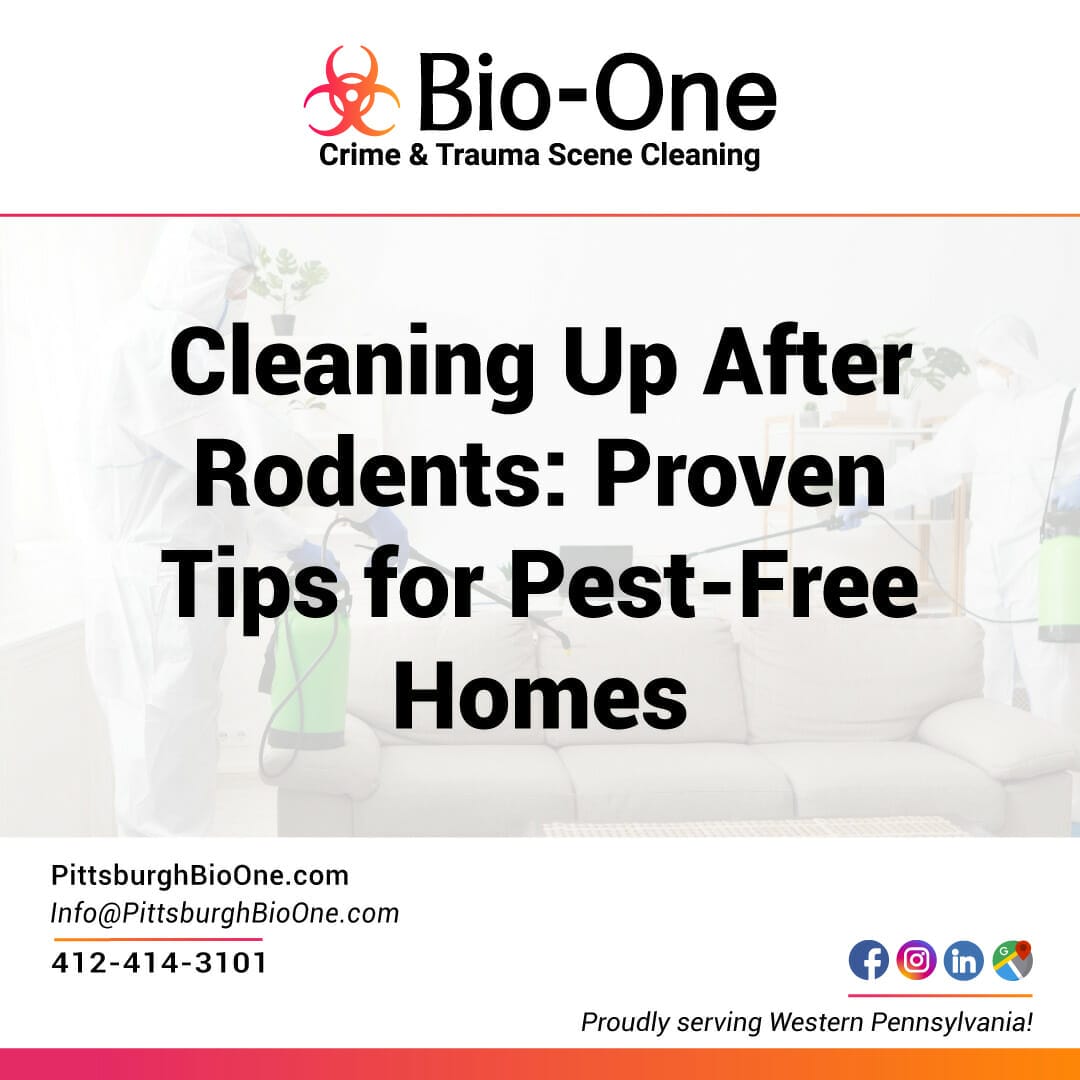
Rodent infestations can happen to anyone at any time. These tiny critters can find their way into our homes and businesses causing considerable damage, and before you know it, they can reproduce, causing a big health hazard. Cleaning up after rodents can be a daunting task, and while contacting a rodent control professional is always advisable, knowing some proven cleaning practices can be useful in maintaining a pest-free home.
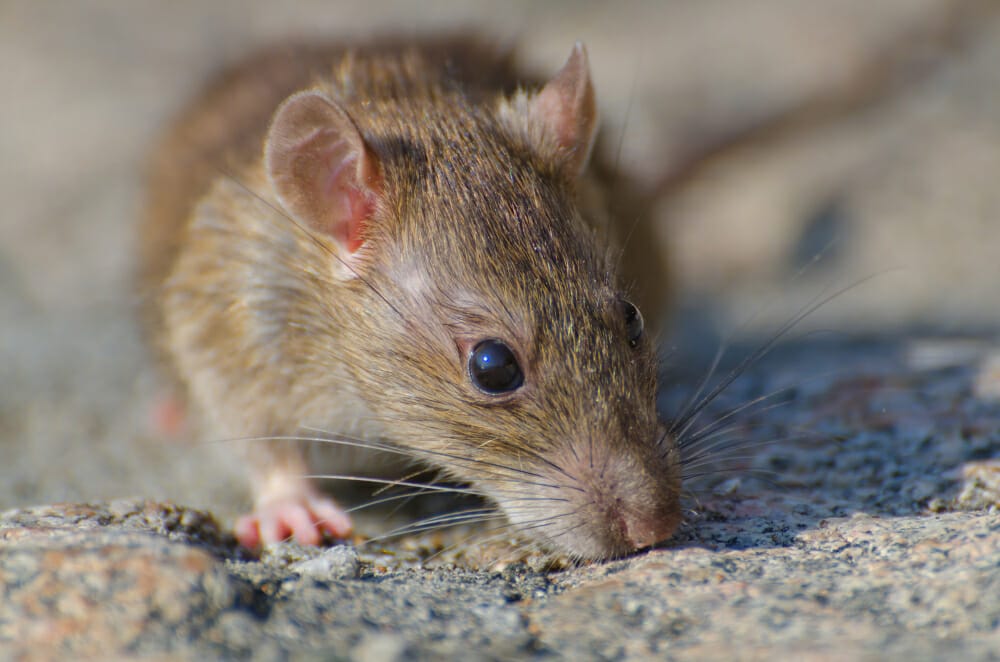
In this blog post, we will be discussing some tips and practices for cleaning up and eliminating waste after a rodent or pest infestation. We will also highlight the importance of using appropriate cleaning products and the risks associated with animal carcasses and bodily fluids or remnants.
Before anything else, identify the areas which are infested by rodents. Look for places where they nest, eat, and roam. The common areas include:
Once you have identified these areas, it is essential to isolate them from the rest of your home to avoid further contamination.
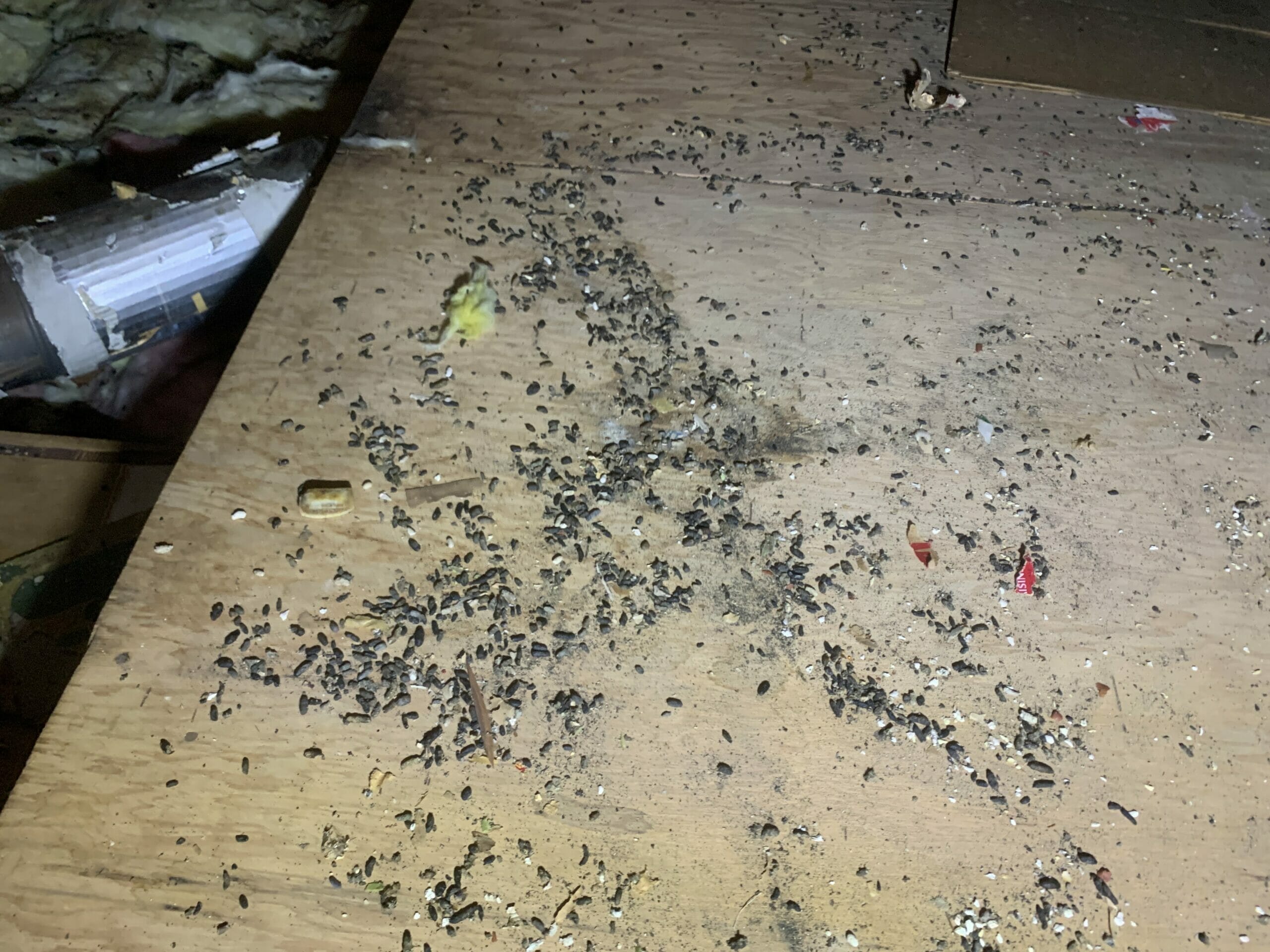
Rodents carry diseases that can be dangerous to humans. To avoid transporting any disease-causing pathogens, it's important to wear rubber gloves, a face mask, and protective clothing while cleaning up after rodents. This precaution will protect you and your loved ones from any bacteria or viruses carried in urine and feces.
Before starting to clean up, open all the windows and doors and let fresh air in for at least half an hour. Cleaning up after rodent infestation can release bacteria and viruses into the air, and airing out the spaces can reduce the risk of infection.
To clean up after rodents, use a disinfectant solution. The Centers for Disease Control and Prevention recommends cleaning with a bleach solution made from 1.5 cups of household bleach in 1 gallon of water. Spray the entire area with the solution, let it set for 5 minutes, then wipe it down with paper towels. Do not use rags you plan to wash later. Double-bag the dirty rags and dispose of them in the garbage.
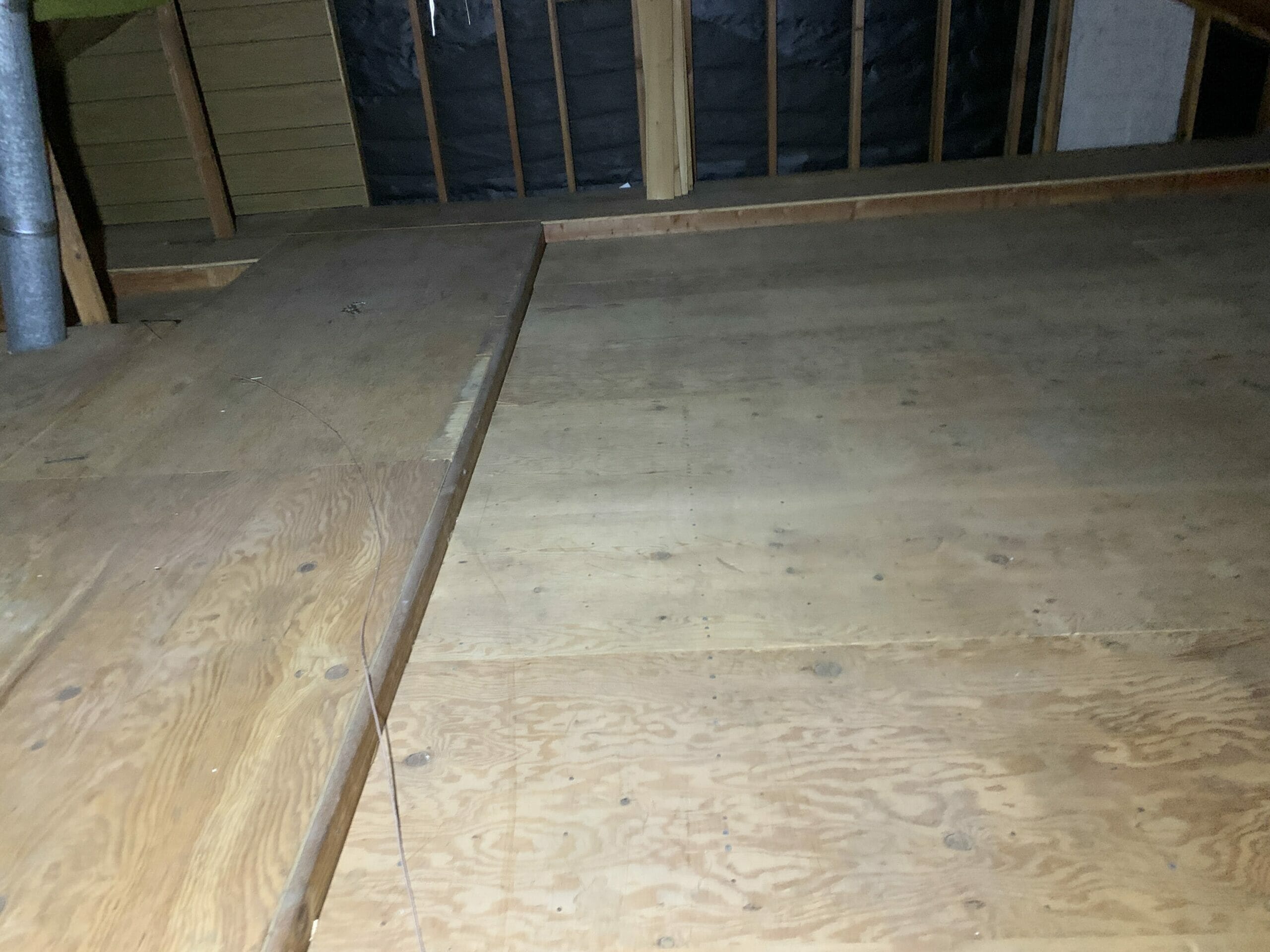
Once the cleaning is done, sanitize the entire area to kill off any remaining bacteria or viruses. Mix a quarter-cup of bleach with one gallon of water and repeat the process of spraying, sitting, and wiping. Ensure that every nook and cranny is thoroughly sanitized, and you're good to go.
Recommendation: Selected EPA-Registered Disinfectants - United States Environmental Protection Agency
While it may seem like a daunting task, taking the time to do it correctly will ensure that no health risks are posed to you and your family. Remember, wearing protective gear, sanitizing, and airing out the space are essential. However, in cases of severe infestation, calling in a professional is always the safest bet.
Bio-One's professionals are trained in cleaning and restoring hazardous materials, including rodent waste, ensuring that your property is perfectly clean. Contact us for all your cleaning needs!

Mold is never a welcome guest in our homes or commercial properties. It can be unsightly and even pose health risks to ourselves and our families. That's why it's important to know how to clean up mold quickly and efficiently. In this blog post, we'll explore the main causes of mold and water damage, as well as what needs to be done to address each cause.
We'll also discuss the dangers of mold exposure and why professional mold remediation experts like Bio-One of Pittsburgh can ensure the cleanup is thorough and properties are restored to complete safety.
Mold thrives in damp and dark environments. Often, mold growth is a result of water damage sustained to a property. This can happen due to flooding, leaks in pipes or roofs, or persistent high levels of moisture in the air.
One of the first steps in preventing mold growth is to identify the source of water damage and address it as soon as possible.
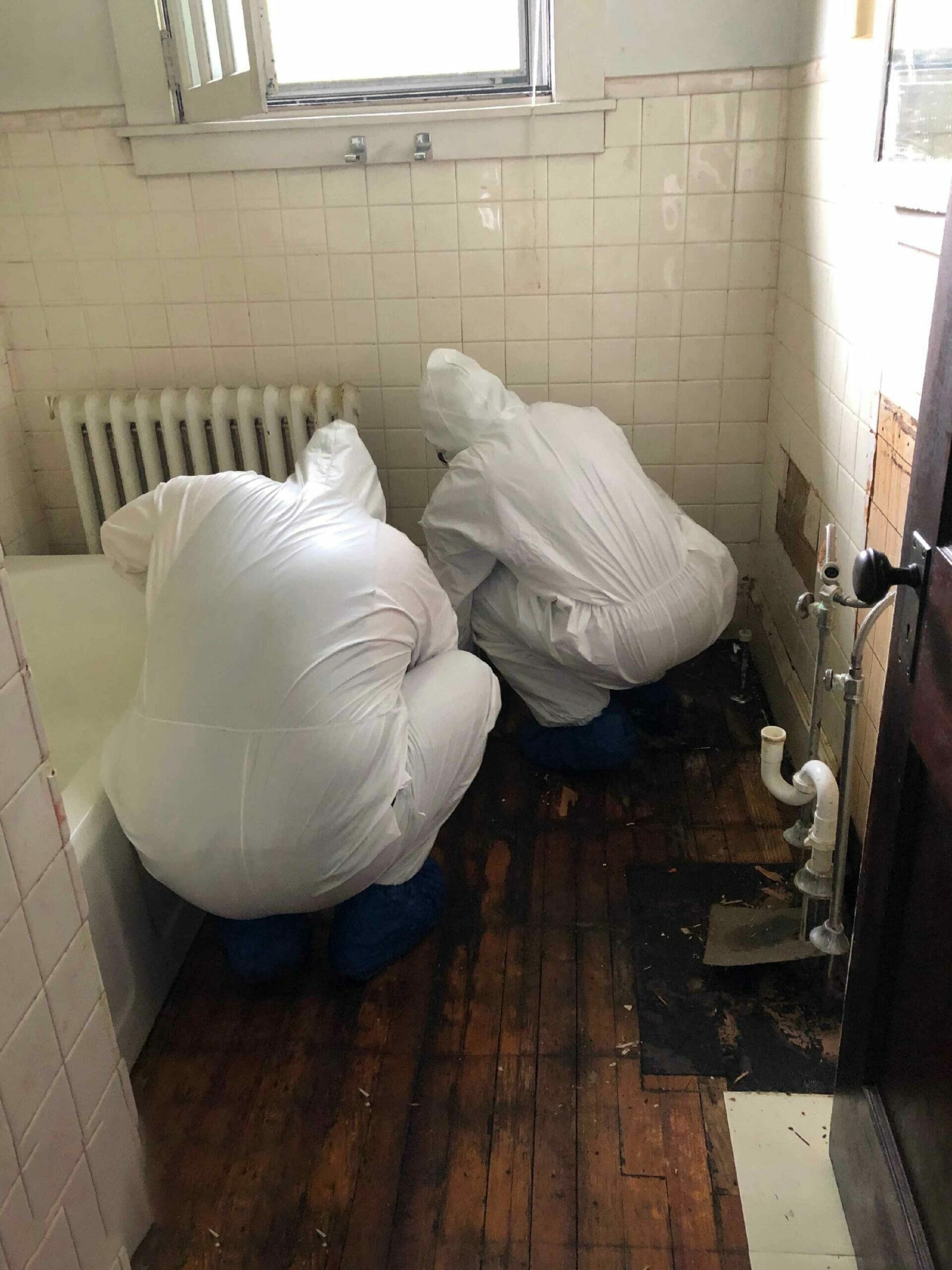
In order to address water damage that leads to mold growth, it's important to act fast. Time is of the essence when it comes to cleaning up after water damage, as mold can grow within 24-48 hours. The first step is to remove any standing water from the property and dry out any damp or wet areas with fans or dehumidifiers. It may also be necessary to remove any damaged or contaminated materials such as drywall or flooring.
The damage can be determined by a mold inspection company, while the remediation process can be handled by professionals.
Once the water damage has been addressed, it's time to clean up any mold that may have grown as a result. For areas less than 10 square feet, a solution of bleach and water can be used to clean surfaces. However, for larger areas or areas with heavy mold growth, bleach is not recommended, as it can be harmful to both the environment and human health.
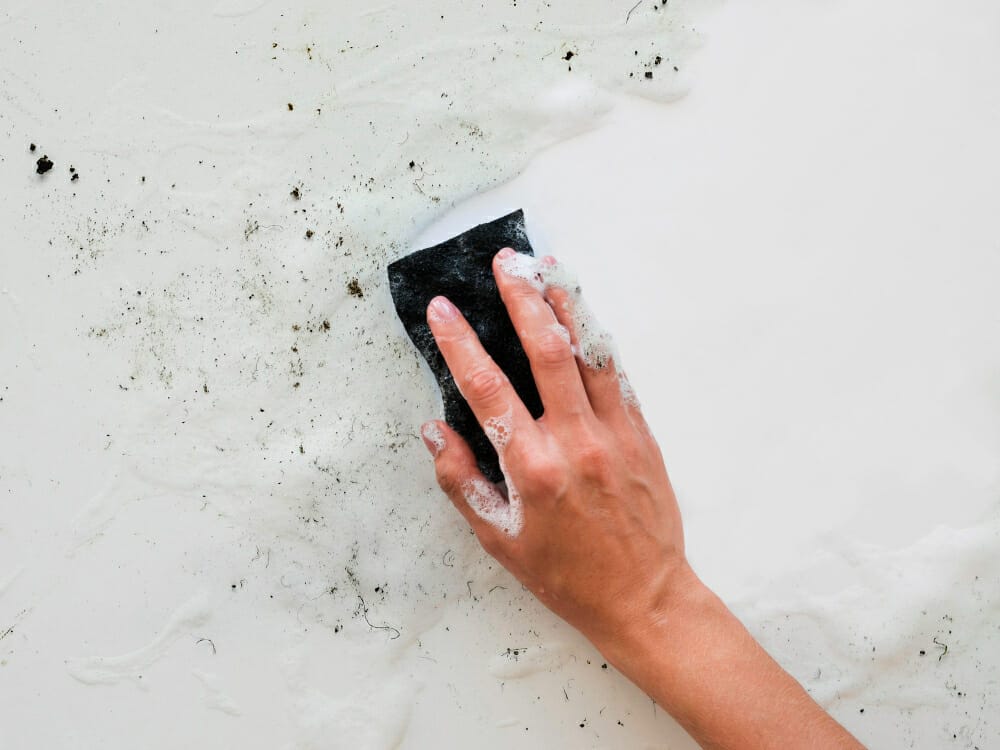
In these cases, it's best to leave mold remediation to professionals equipped to remove and prevent future mold growth.
Mold exposure can lead to a range of health problems, including allergic reactions, respiratory issues, and even infections. These risks are particularly high for people with asthma, compromised immune systems, and allergies. Ignoring mold problems can lead to more extensive damage and potentially dangerous health consequences.
Now that you're armed with the knowledge of how to clean up mold efficiently, swift action is fundamental. And, if in doubt, it's always best to seek the assistance of professional mold remediation companies. Ensuring the safety and health of our homes and businesses should always be a top priority when cleaning up mold.
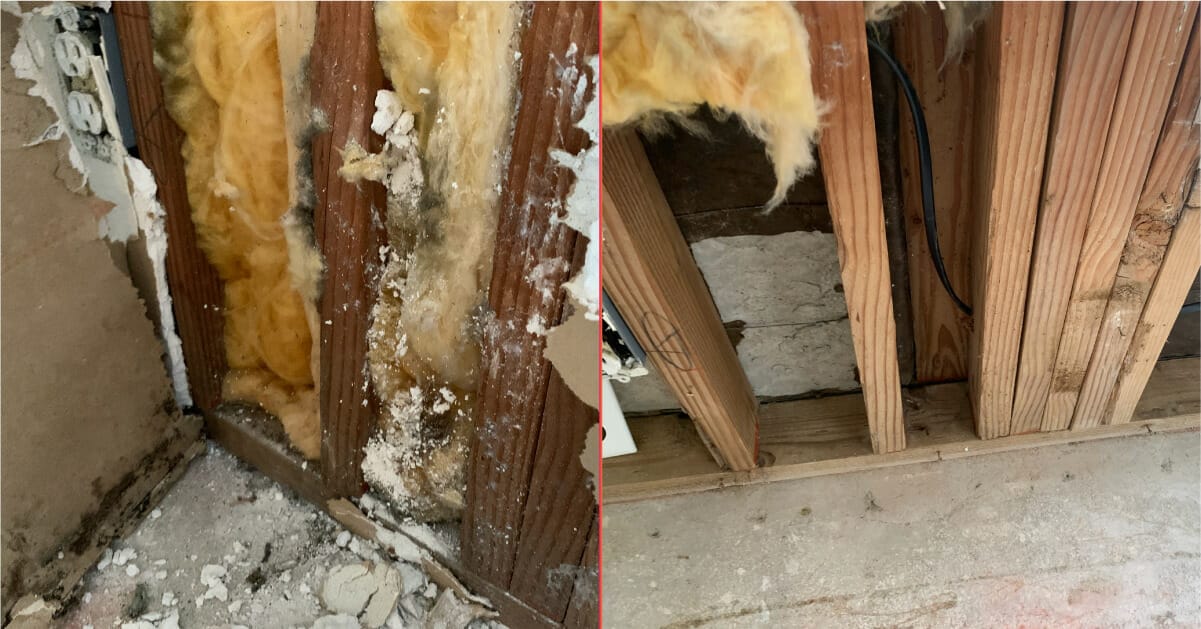

Hoarding is a psychological condition wherein people have a hard time letting go of their possessions, regardless of their actual value. This condition can put a strain on one's relationships, career, and overall health and well-being. Contrary to popular belief, hoarding isn't just a regular habit of being a collector or a packrat - It's a disorder that requires treatment. In this blog post, we'll be discussing the most common options of treatment for hoarding and how our remediation technicians at Bio-One can help.

The first option for treating hoarding typically starts with therapy. CBT is a type of talk therapy that works by helping the hoarder change behaviors and thought patterns that lead to hoarding.
Learn more here: Treatment of HD – Cognitive Behavioral Therapy (CBT)
Hoarding is typically related to other mental health conditions such as OCD, ADHD, or PTSD, so it's important to talk to a medical professional about possible medication options. Some people with hoarding disorder take medication to help alleviate symptoms of anxiety or depression, which can exacerbate hoarding behaviors.
Learn more here: What is Hoarding Disorder?

These are great options for many hoarders because they offer a sense of community and understanding. They're usually led by trained professionals who can provide guidance and support. In support groups, hoarders can share their experiences, challenges, and triumphs with people who understand what they're going through.
Removing clutter is the most efficient way to start controlling hoarding behaviors. It may seem overwhelming to clean the property alone, but enlisting the help of a professional cleaning and organizing service can help you get started. They can help you get rid of unnecessary items, organize your space, and create a plan to keep your living environment clean in the future.
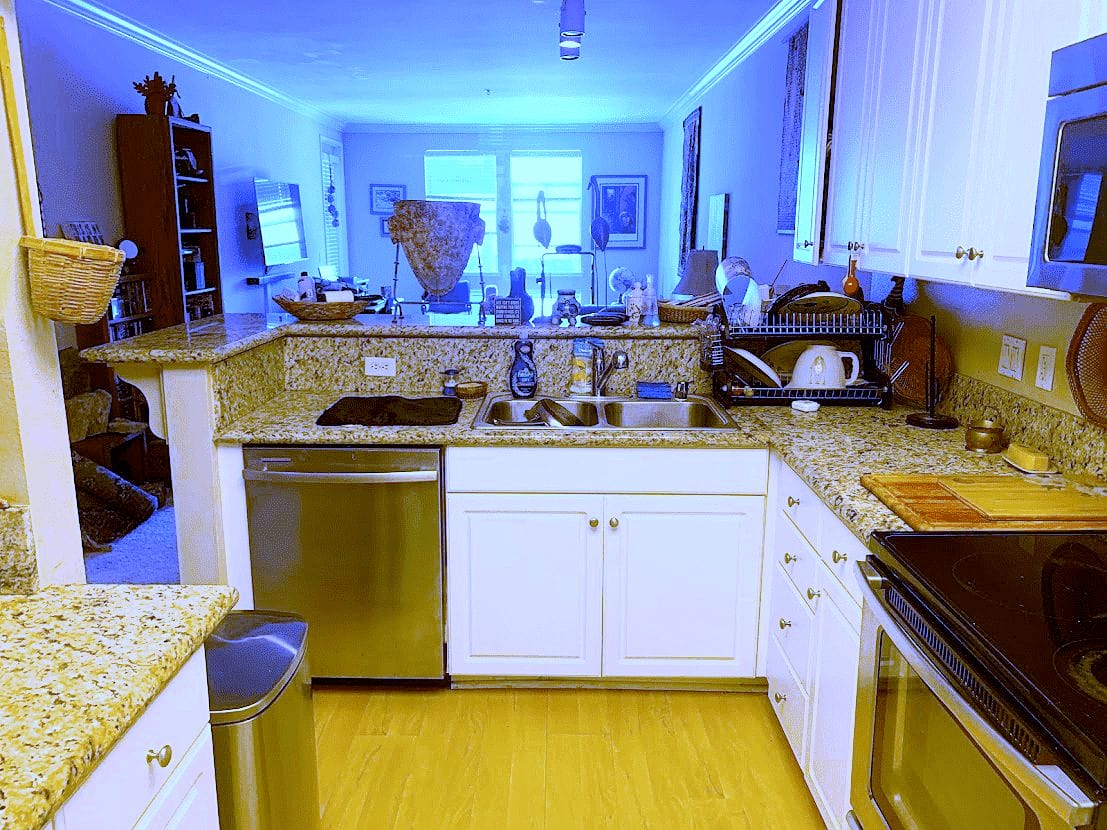
Treating hoarding may seem daunting, but it's an essential step toward improving your overall well-being, relationships, and quality of life. CBT, medication, support groups, and the help of professionals are all effective options for treating hoarding disorder. We will support and guide you every step of the way!